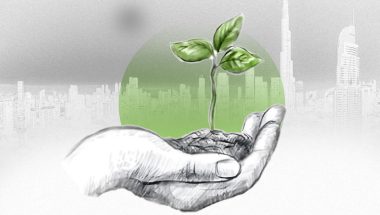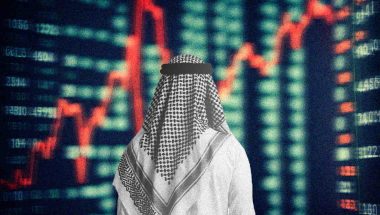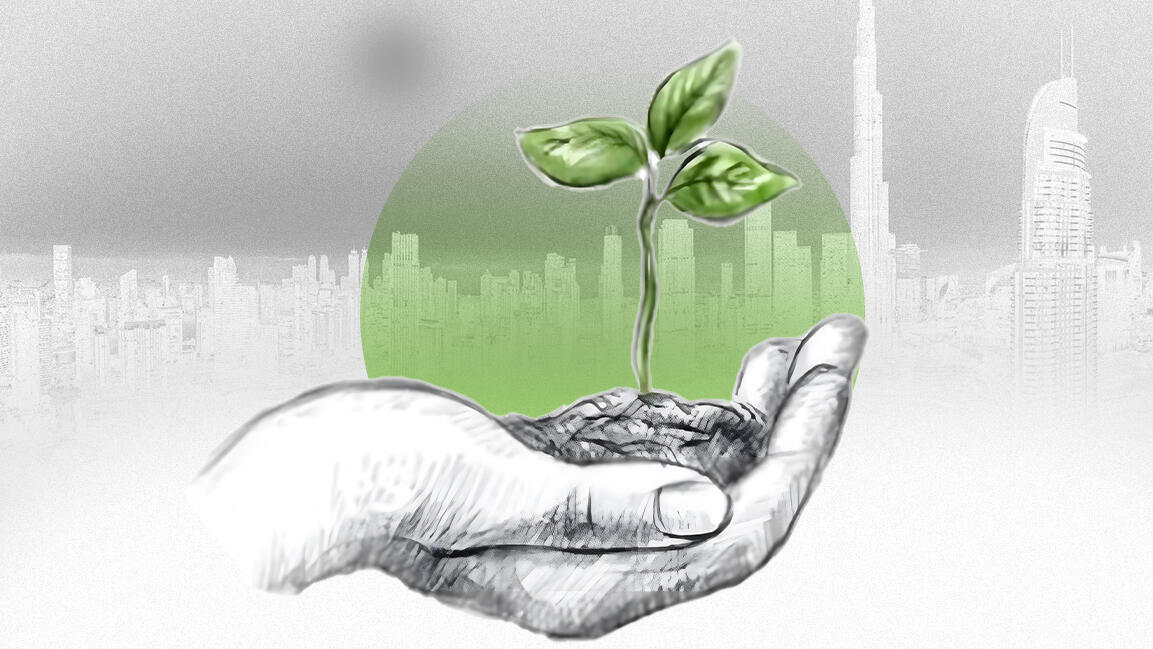- | 9:00 am
Why the world’s biggest denim brands are turning to Egypt
The country has a strong textile heritage, skilled labor, access to premium long-staple cotton, and a strategic position in the global denim market due to its proximity to fashion hubs in Europe, Africa, and the Middle East

Few may realize it, but some of the world’s most popular denim brands are being manufactured in Egypt. With its strategic location, skilled workforce, and rich textile heritage, north Africa is rapidly becoming a major force in global denim production.
Egypt’s rise in denim manufacturing is setting new industry standards, attracting significant foreign investment, and reinforcing its position as an export-driven textile powerhouse.
“Egypt holds a strategic position in the global denim market due to its proximity to fashion hubs in Europe, Africa, and the Middle East, allowing for shorter lead times and reduced shipping costs,” says Adel Kudsi, CEO of KB Denim, a vertically integrated supplier of denim and gabardine fabric.
“The country also benefits from a strong textile heritage, skilled labor, and access to premium long-staple cotton, which enhances fabric quality.”
KB Denim exports its products to international markets, including Turkey, Saudi Arabia, Morocco, and Algeria, supplying denim to fashion brands, garment manufacturers, and retailers.
VERTICAL INTEGRATION: A COMPETITIVE EDGE
A key strength of Egypt’s denim industry is its vertical integration, which enables streamlined production from fabric weaving to garment finishing.
“Egypt has built an infrastructure that allows complete vertical integration in denim. We have factories for fabric production, cutting and sewing, and garment finishing. Additionally, the country has sufficient water resources, which are heavily used in denim washing,” says Mohamed Elhady, country manager for Shanghai Shengda International. This Chinese textile manufacturer established an Egyptian factory in 2019.
Free trade agreements with the EU, Gulf countries, the US, and African nations further enhance Egypt’s appeal. Competitive pricing and high-quality craftsmanship have drawn global brands, solidifying Egypt’s reputation as a prime destination for denim manufacturing.
For example, T&C Garments, a joint venture between Egypt’s Tolba Group and Turkey’s Tay Group, produces denim garments for global brands such as Levi’s, VF Corporation, Ann Taylor, Uniqlo, and Jones New York. Similarly, Lotus Garments supplies millions of jeans annually to leading fashion names, including Levi’s, Polo Ralph Lauren, and VF Corporation.
INVESTMENT IN THE DENIM SECTOR
State-of-the-art industrial parks, government incentives, and infrastructure advancements continue to attract global textile players.
One of the newest entrants to the market is Turkish manufacturer Eco-Garment Denim. In 2024, it expanded into Egypt with a significant cutting and sewing facility, investing in advanced machinery, workforce training, and a supply chain for cost-effective, high-volume production.
“Egypt offers proximity to European and Middle Eastern markets, skilled labor at competitive wages, and access to high-quality cotton. Manufacturers can leverage these advantages by emphasizing shorter lead times, customizable production runs, and higher-quality fabric sourcing to stand out in the global market,” says Ersin Çakar, production director at Eco Garment Denim.
He adds that denim manufacturers in Egypt are investing in automation, such as computer-aided design and cutting systems, as well as advanced finishing and washing technologies. “Partnerships with international machinery suppliers and government incentives to modernize textile operations are also helping raise production standards.”
SUSTAINABILITY: THE FUTURE OF DENIM MANUFACTURING
Denim production is resource-intensive, consuming vast amounts of water and energy. According to UNEP, producing a single pair of jeans requires as much as 3,781 liters of water. Additionally, traditional dyeing and finishing processes use toxic chemicals, raising environmental concerns.
Çakar highlights that many denim manufacturers in Egypt are embracing eco-friendly washing techniques, utilizing advanced dyeing and finishing techniques that minimize chemical use, water-recycling systems, and sustainable materials such as organic and BCI-certified cotton to minimize resource consumption. Additionally, a growing focus on renewable energy adoption, worker well-being initiatives, and transparent supply chains reflects a broader commitment to responsible manufacturing.
Laser dry processing and ozone washing techniques are gaining traction, significantly reducing water and chemical use in denim finishing. Solar energy and wastewater treatment investments further illustrate Egypt’s commitment to environmentally responsible manufacturing.
According to Elhady, environmentally friendly techniques such as laser dry processing and ozone washing are gaining traction, significantly reducing water and chemical consumption in denim finishing. He notes that sustainability is becoming increasingly important in Egypt’s textile industry, driven by the demands of international brands sourcing from the country.
“Factories are making strides in sustainability,” he says. “Many are investing in solar panels for electricity and water heating, as well as building wastewater treatment units to ensure proper filtration before discharge into public sewage systems.”
CHALLENGES AND OPPORTUNITIES
Despite its success, Egypt’s denim sector faces several challenges.
Fluctuating global cotton prices, currency exchange rates, and economic shifts significantly impact overall production costs. Moreover, according to Kudsi, the growing demand for sustainable denim necessitates continuous investment in green technology. A major obstacle is the lack of local spinning mills to process Egyptian cotton into yarn, forcing manufacturers to rely on imports. The ongoing Red Sea crises have further disrupted supply chains.
“Egypt needs to focus on attracting investment in spinning mills to support its denim industry,” says Elhady.
Another challenge is worker productivity, a concern across the entire textile industry. According to Elhady, Egyptian workers’ sewing productivity is approximately 60–70% of that of their counterparts in the Far East, increasing overall production costs compared to other countries.
THE ROAD AHEAD
Recognizing these challenges, Egypt has launched an ambitious initiative to modernize its textile sector. The government recently completed the first phase of a large-scale revamp, including the operational launch of Ghazl 1, the world’s largest spinning factory. It is capable of producing 30-35 tons of yarn per day and is set to cater to both domestic demand and export markets.
Prime Minister Mostafa Madbouly announced in December 2024 that the multi-phase modernization project will expand textile infrastructure in cities such as El-Mahalla, Kafr El-Dawar, Damietta, and Minya. Phase two is slated for completion by mid-2025, with complete implementation expected by 2026.
“As global brands prioritize nearshoring and sustainable sourcing, Egypt is well-positioned to become a key denim manufacturing hub,” says Kudsi.
Elhady echoes this optimism: “Denim production in Egypt remains one of the strongest segments in the textile industry. The country’s vertical integration in denim and superior finishing capabilities are attracting major global brands. The sector will continue expanding if we maintain cost control and efficient lead times.”








































